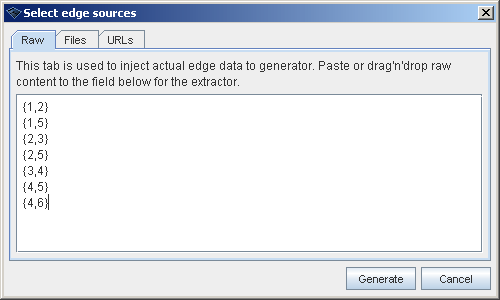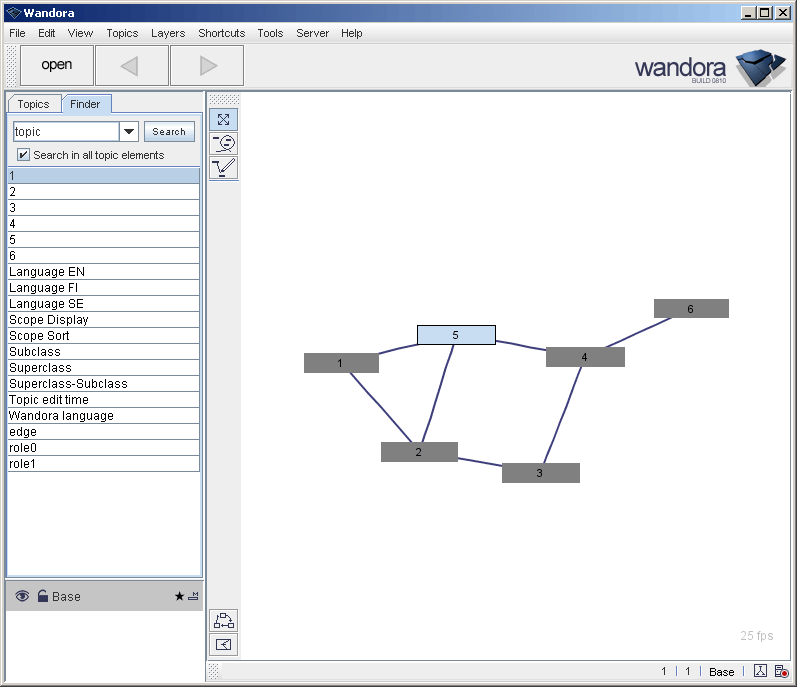Adjacency list import
m (Edge generator moved to Adjacency list import) |
|||
| Line 9: | Line 9: | ||
{4,6} | {4,6} | ||
| − | Here 1,2,3,4,5, and 6 are vertices i.e. nodes of the graph. Wandora's | + | Here 1,2,3,4,5, and 6 are vertices i.e. nodes of the graph. This kind of graph representation is called adjacency list. Wandora's adjacency list import takes such vertex pairs (or vectors in general) and creates topic map constructs i.e. topics and associations for arguments. Vertex labels can contain numbers and letters. Comma is not only vertex delimiter but also '''space''', '''tab''', '''-''', '''|''' are accepted. Edges can separated with any of |
\n\r;:()[]{}<>/ | \n\r;:()[]{}<>/ | ||
Revision as of 21:12, 25 May 2009
It is rather common in math to represent graphs with vertex pairs such as
{1,2}
{1,5}
{2,3}
{2,5}
{3,4}
{4,5}
{4,6}
Here 1,2,3,4,5, and 6 are vertices i.e. nodes of the graph. This kind of graph representation is called adjacency list. Wandora's adjacency list import takes such vertex pairs (or vectors in general) and creates topic map constructs i.e. topics and associations for arguments. Vertex labels can contain numbers and letters. Comma is not only vertex delimiter but also space, tab, -, | are accepted. Edges can separated with any of
\n\r;:()[]{}<>/
characters. Generator accept also edges with more than 2 nodes. Edge generator starts with option File > Generate > Edge generator.... Wandora requests edge data with text/file/url dialog. Below is an example of Edge generator dialog where we have pasted example edges to the text field.
Now we can view generated associations with Wandora's graph view:

